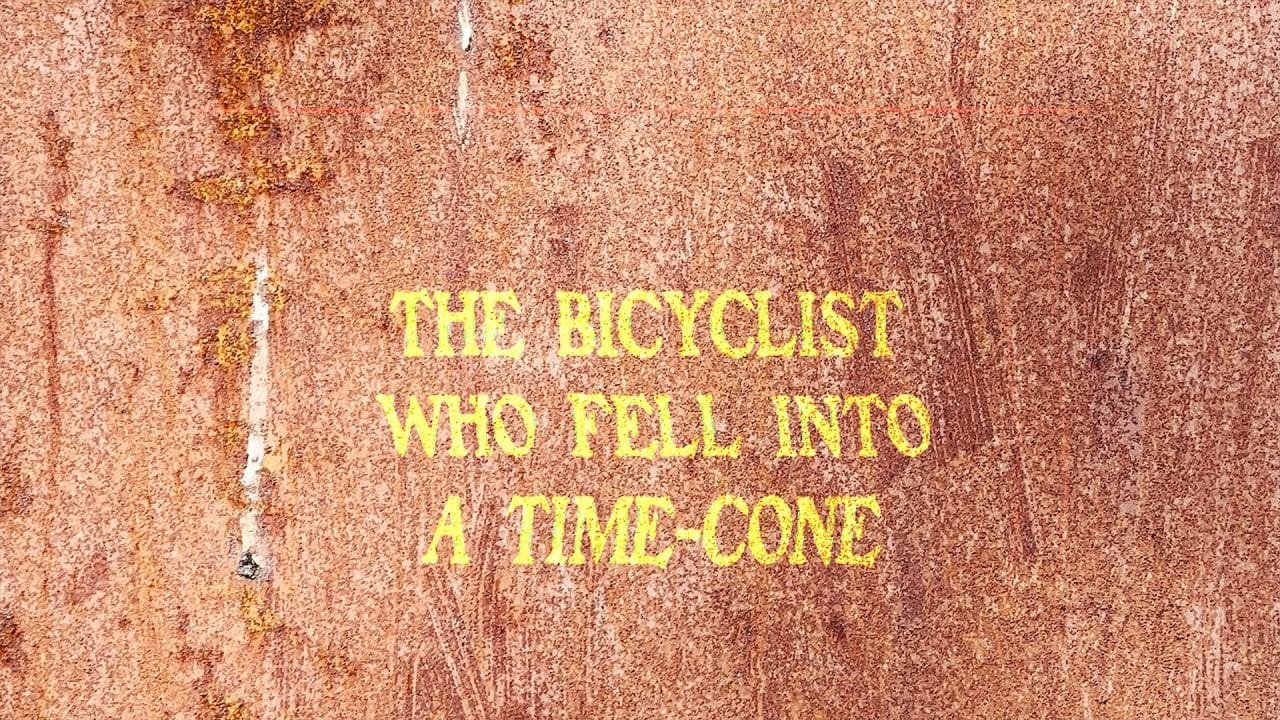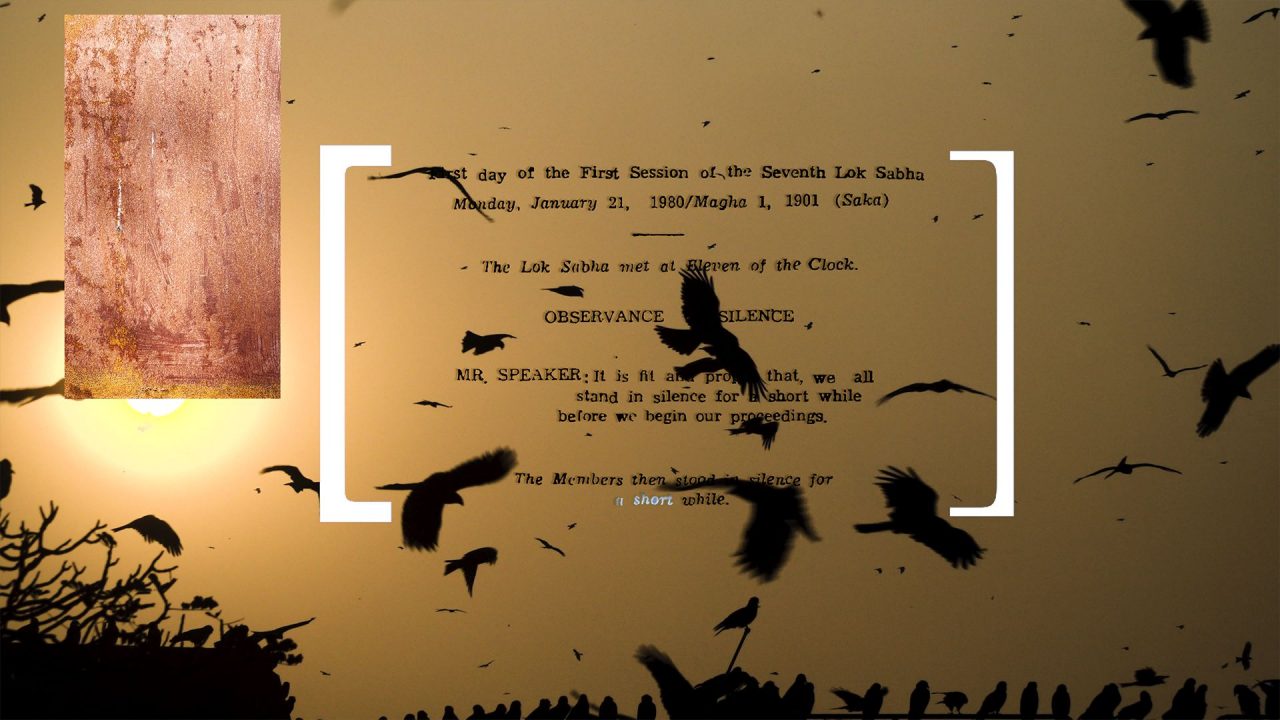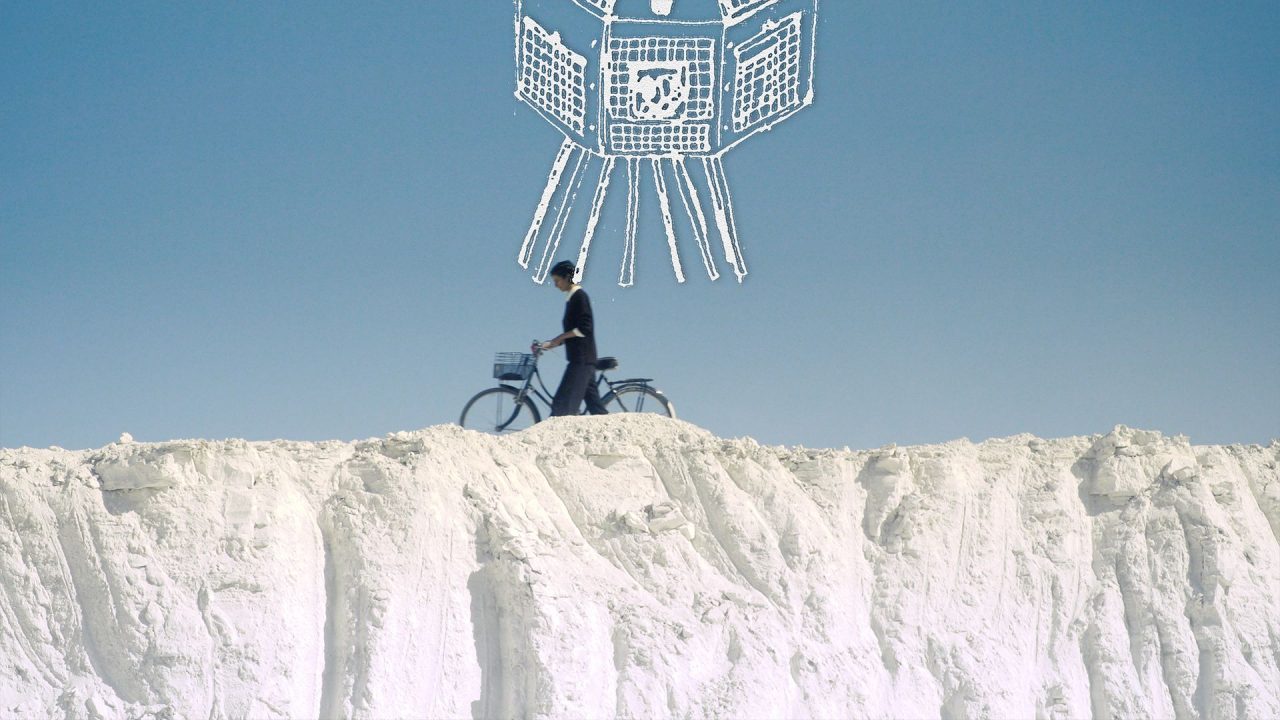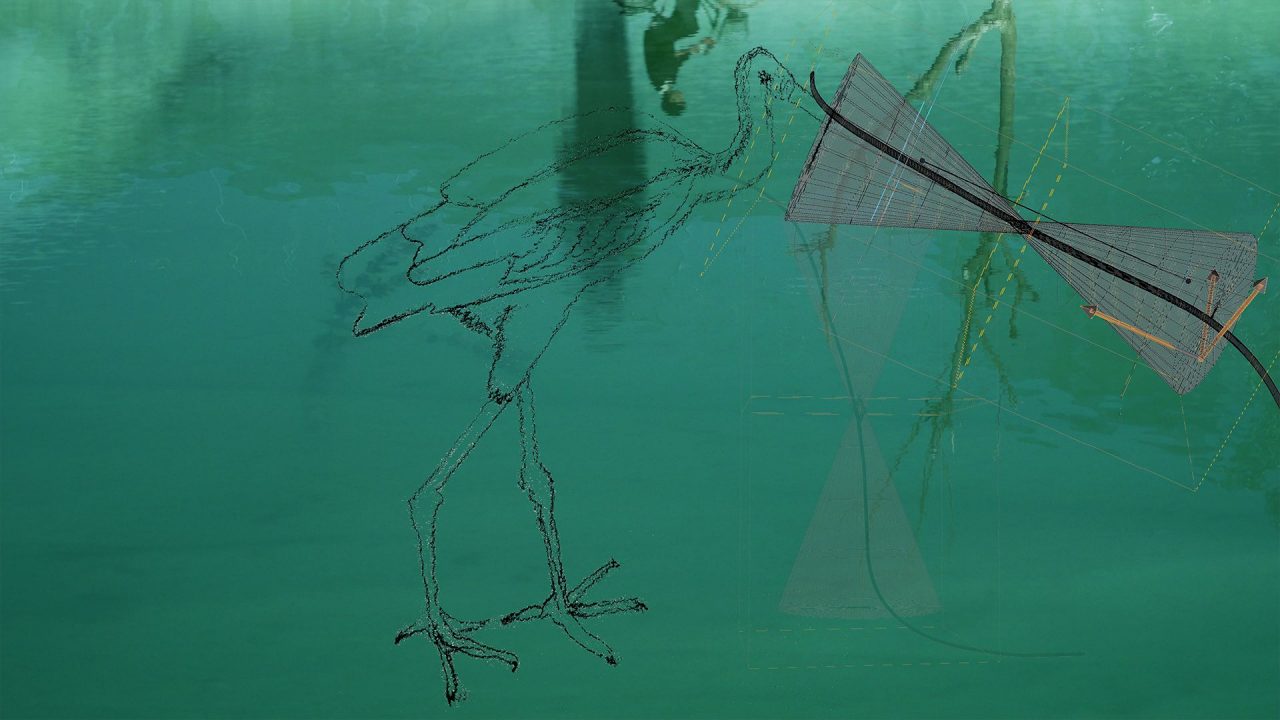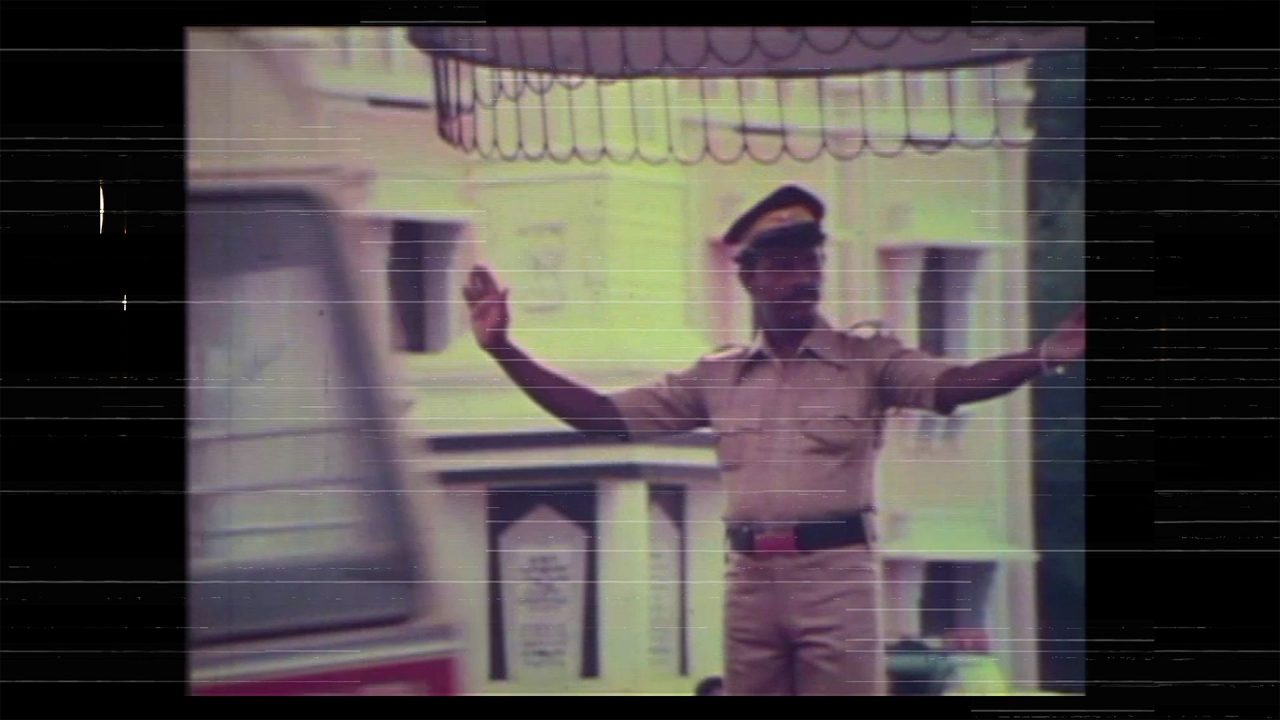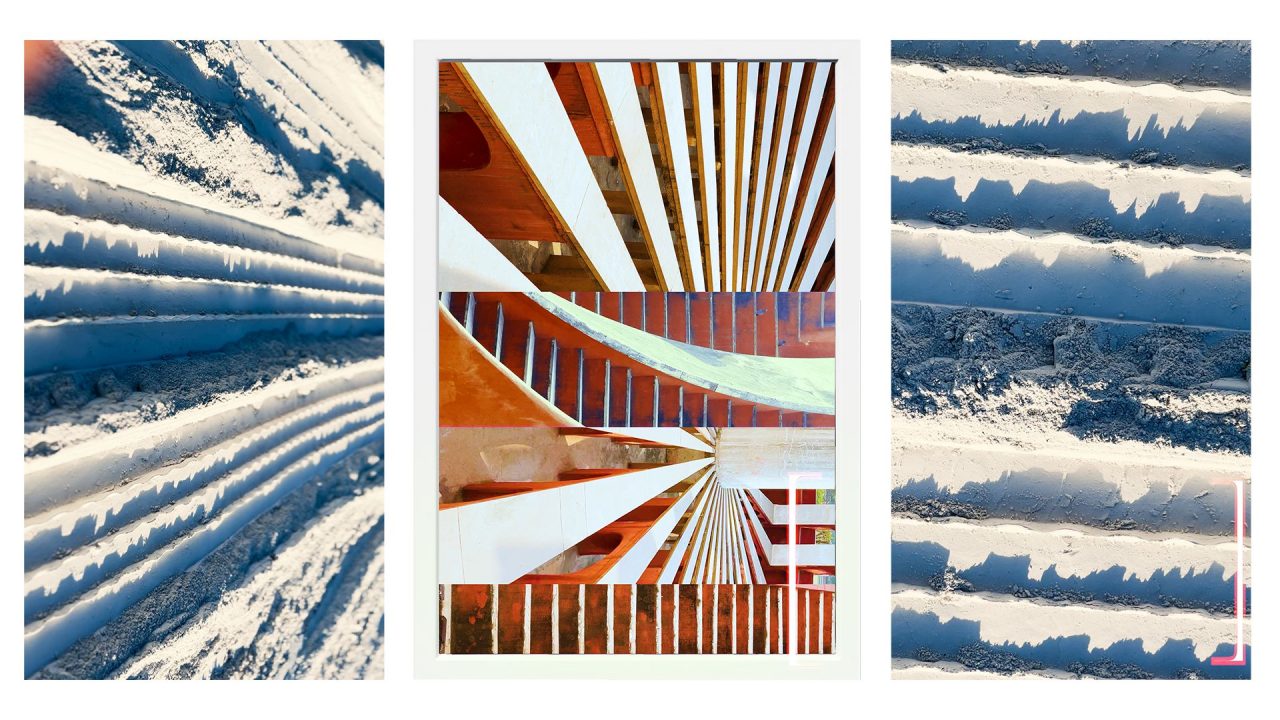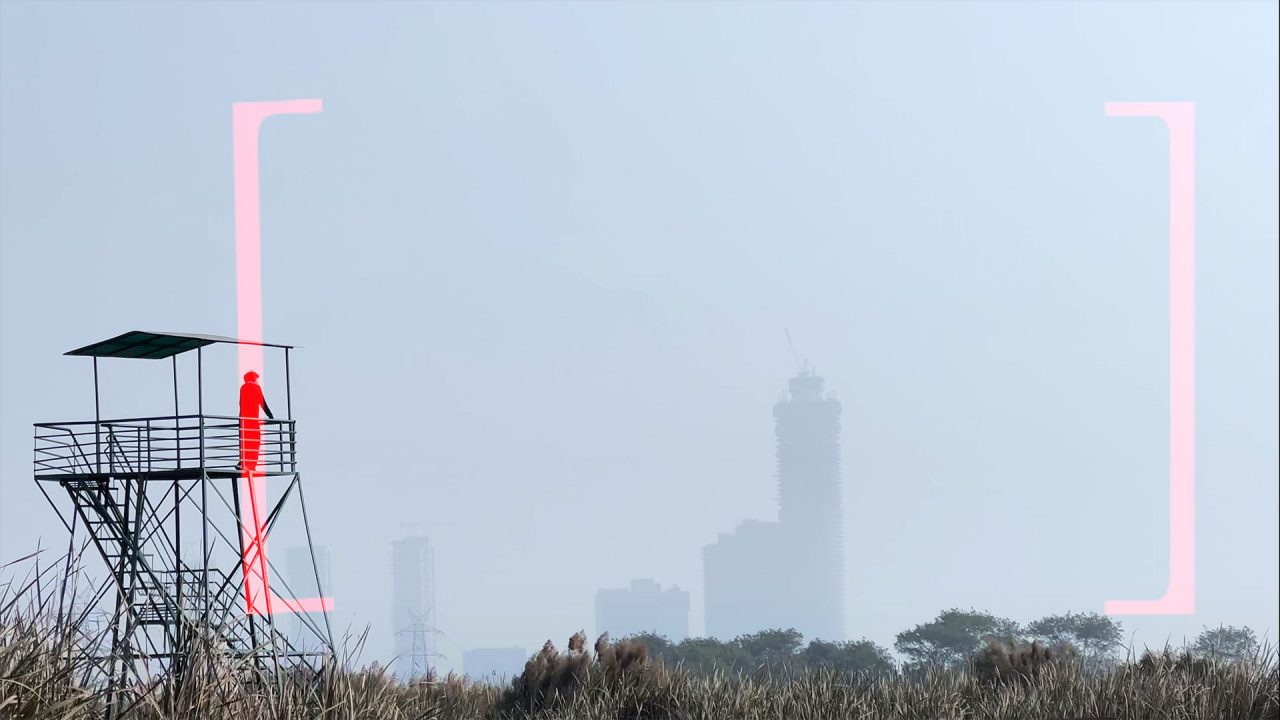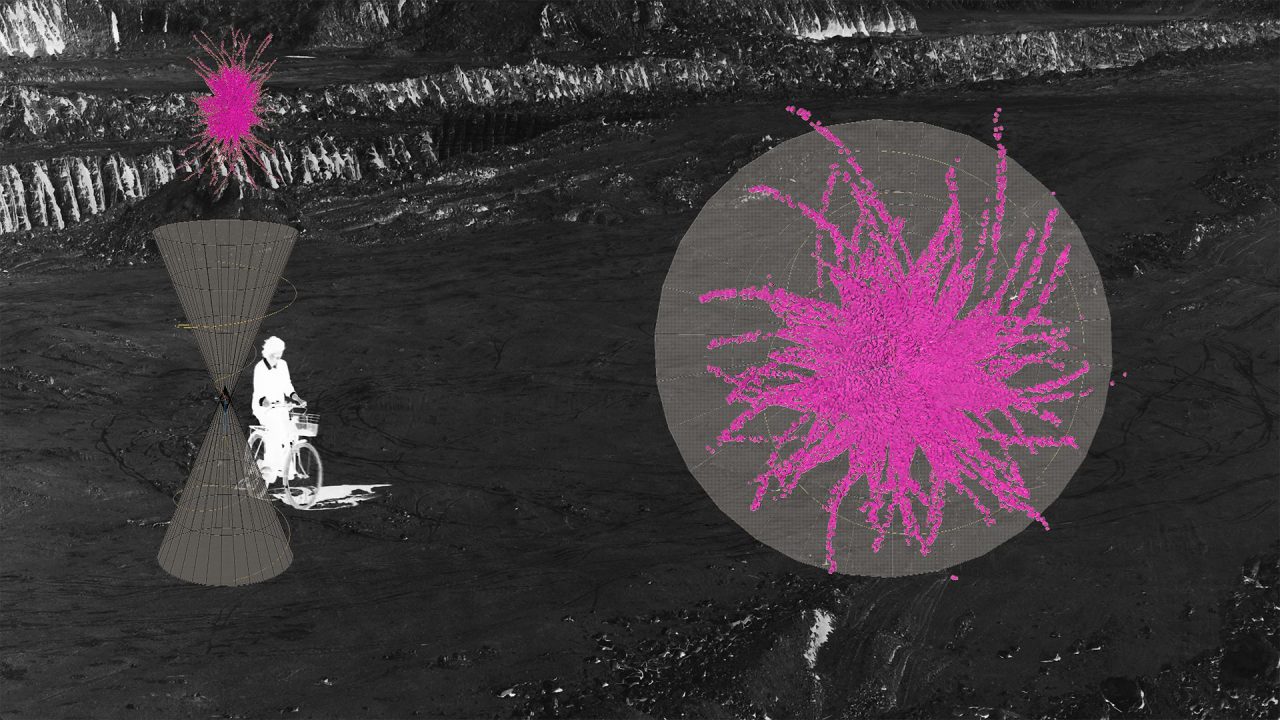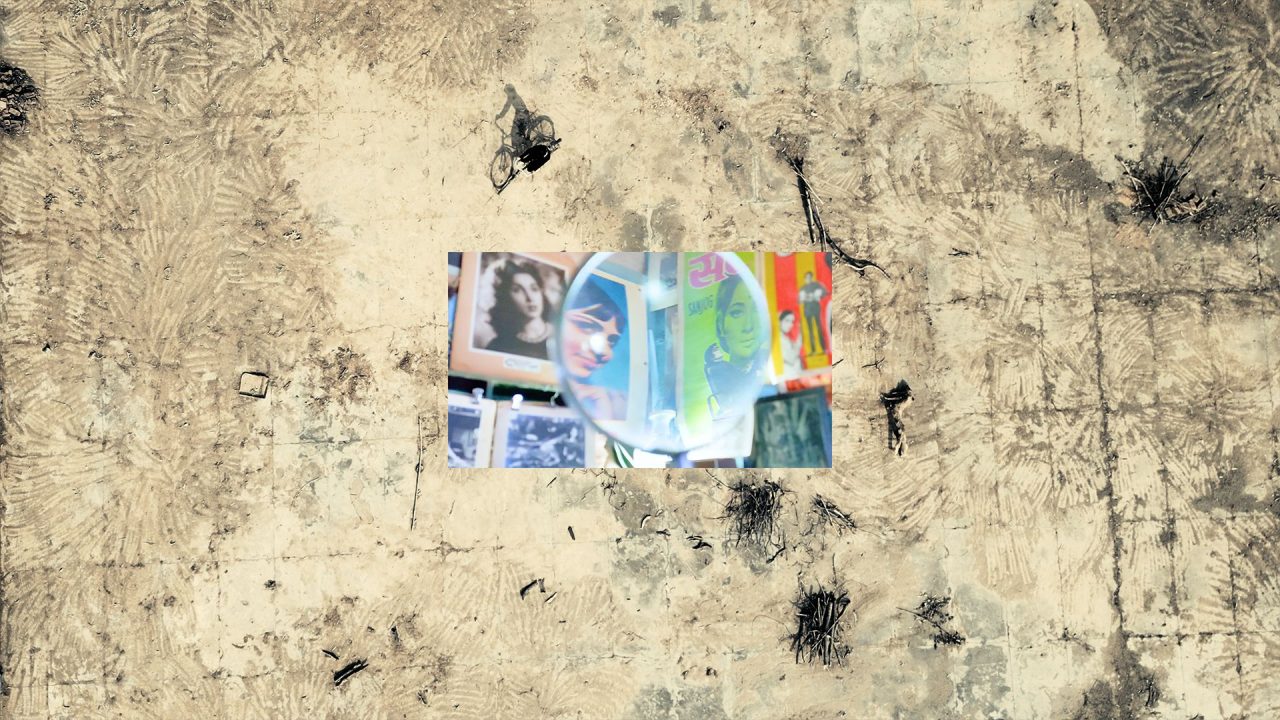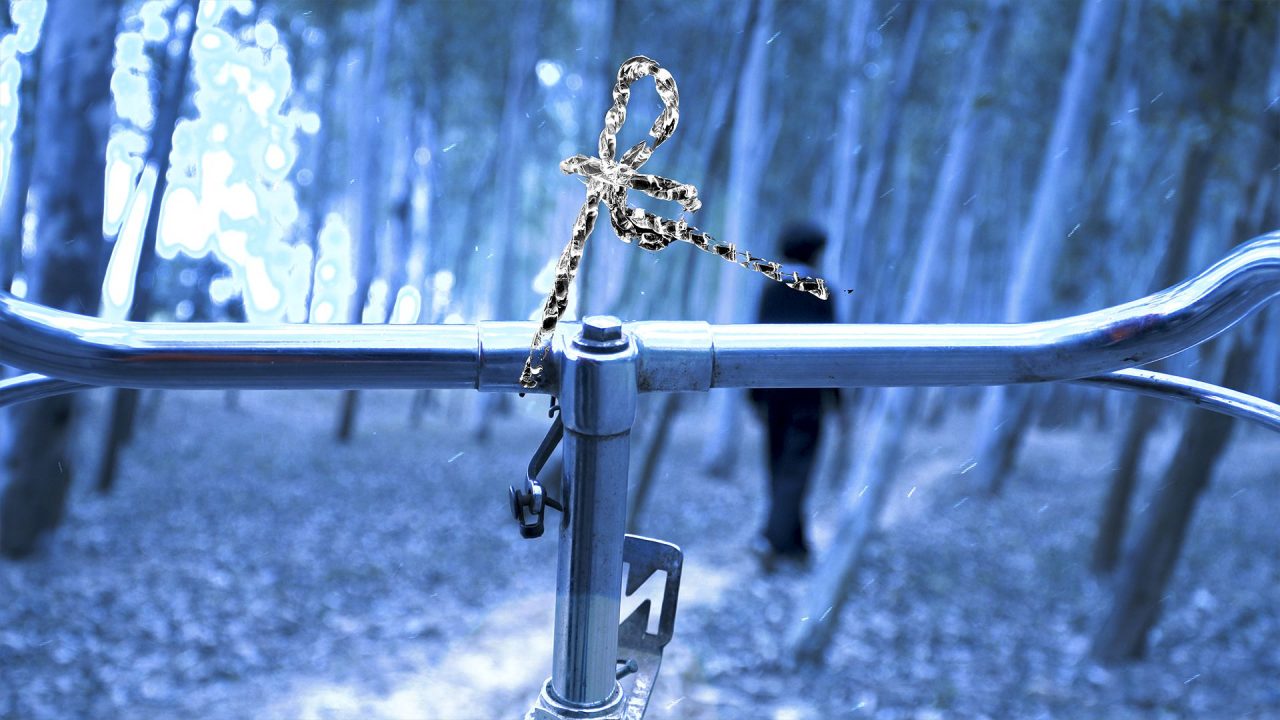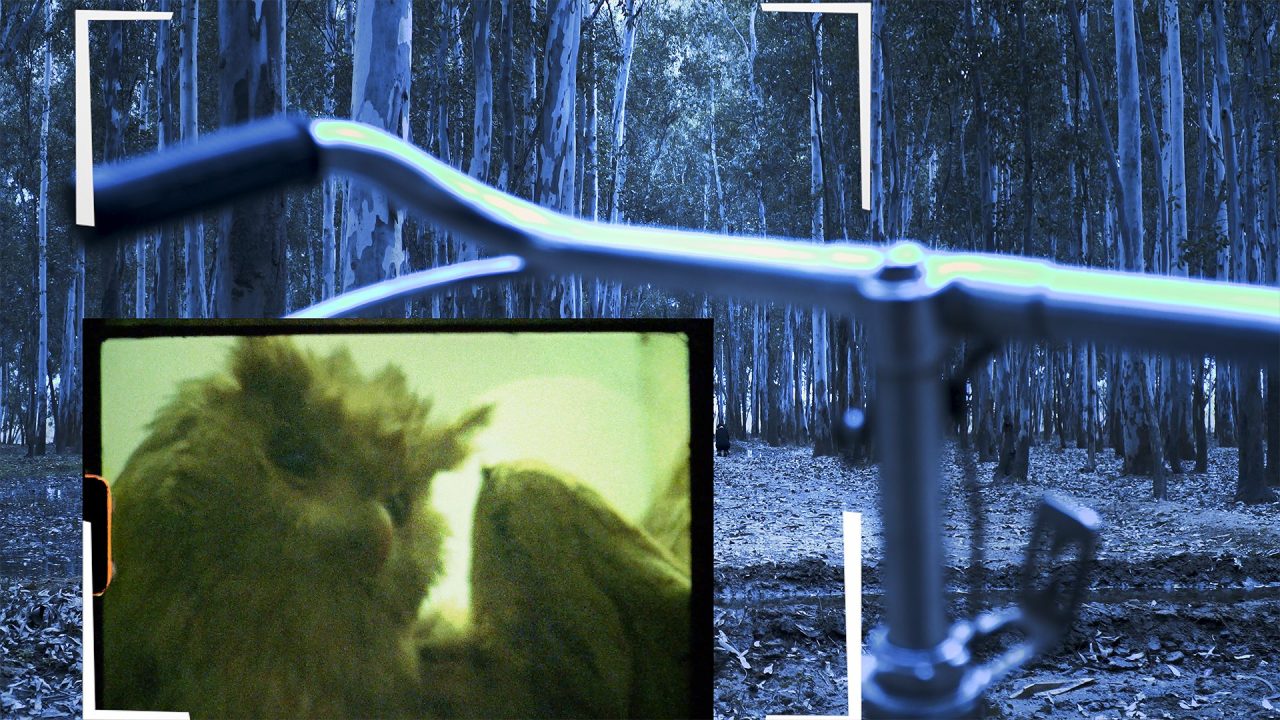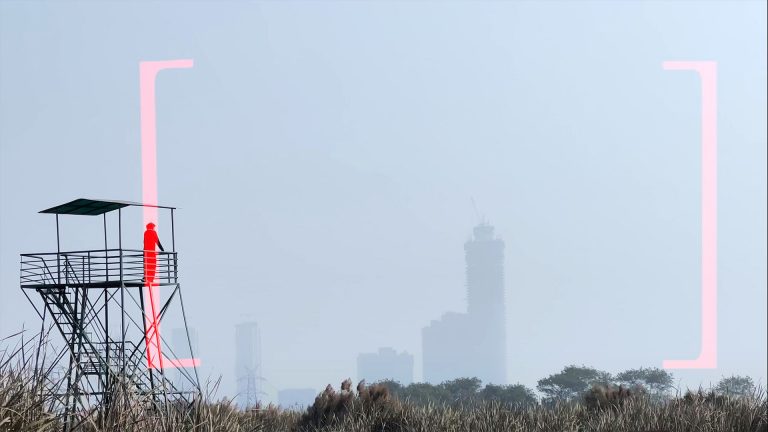The Bicyclist Who Fell into a Time-Cone
Chronogram/ film
Duration: 25:05 minutes
Commissioned by Jencks Foundation at The Cosmic House, United Kingdom (2023)
The Bicyclist who fell into a Time Cone oscillates between fact and fiction while hovering over the year 1980. It was a crepuscular time. A time of thresholds and transience. The memory of a bicyclist, sitting still, holding on to the handlebars, watching an aeroplane spiral down from the sky over Delhi to a crash, remains vivid. The descent of that aircraft was a turn in time, a move along a spiral, a bracket opening and closing like a pause between years of tumult and upheaval. This bracket, this pause, left a significant mark on our collective imaginaries, even though it also felt as if nothing much happened that year.
As a year that didn’t quite break the headlines, it was also the year in which a different visual and optical sensibility, tied to the increasing presence of the video image and its slight ‘parallax’ began to make itself visible. That slight but significant sensory disjunction, the mis-registrations of the new video image, also marks the sensation of watching time simultaneously stand still and spiral out of control. ‘The Bicyclist Who Fell into a Parallax Time Cone’ is an investigation into the optics of this strange and specific sensation of time, which has become second nature since 1980. It is a time traveling search, aboard an imagined and remembered bicycle. pedaling into that pause between turbulences, that lurks in every year. It’s as if there was/is a 1980, hidden, in every year.
Shot in New Delhi’s hinterland, places of wilderness in-between and at the edge of other places, it sees Raqs Media Collective experiment with new visual textures achieved through nesting, embedding, and juxtaposing contemporary footage with found archival images, some of which have been sourced from Jencks travels in India in the 1980s. This polyphony of visual registers is accompanied by a single voice narration; a monologue about time, memory, and history that lapses between scales of temporality and implies a spectral plurality of time. The film’s main protagonist is the figure of the bicyclist whose circular and repetitive journey invokes an explorative and meditative mood. Using temporal and geographical zooms, shifts and overlays a contemplative landscape is created, at once personal and public.
